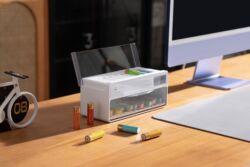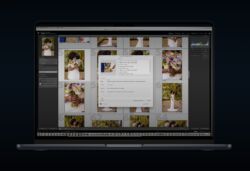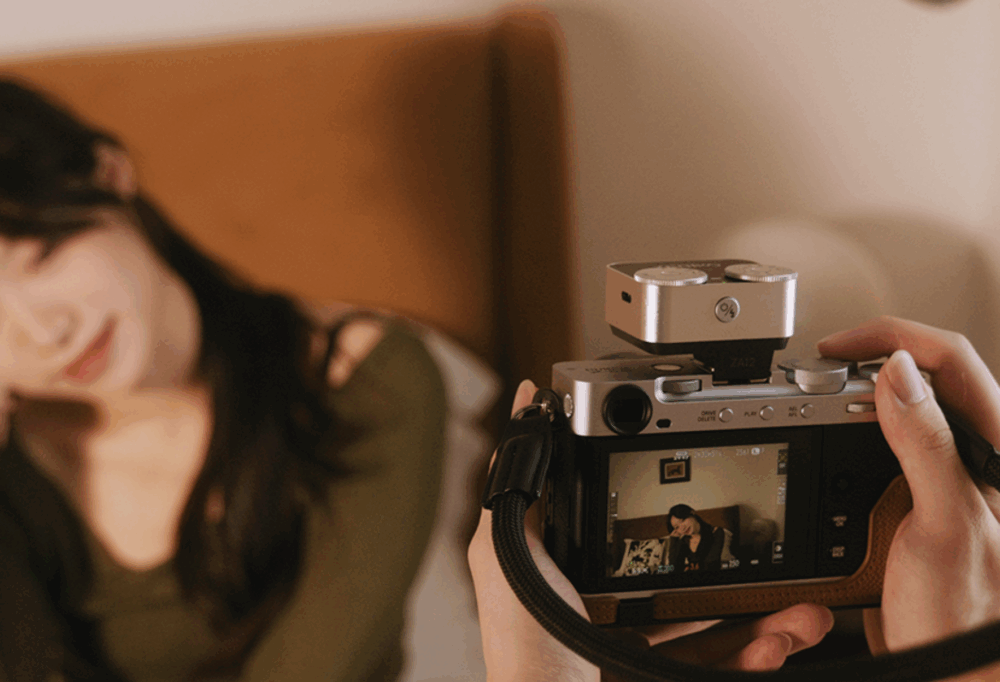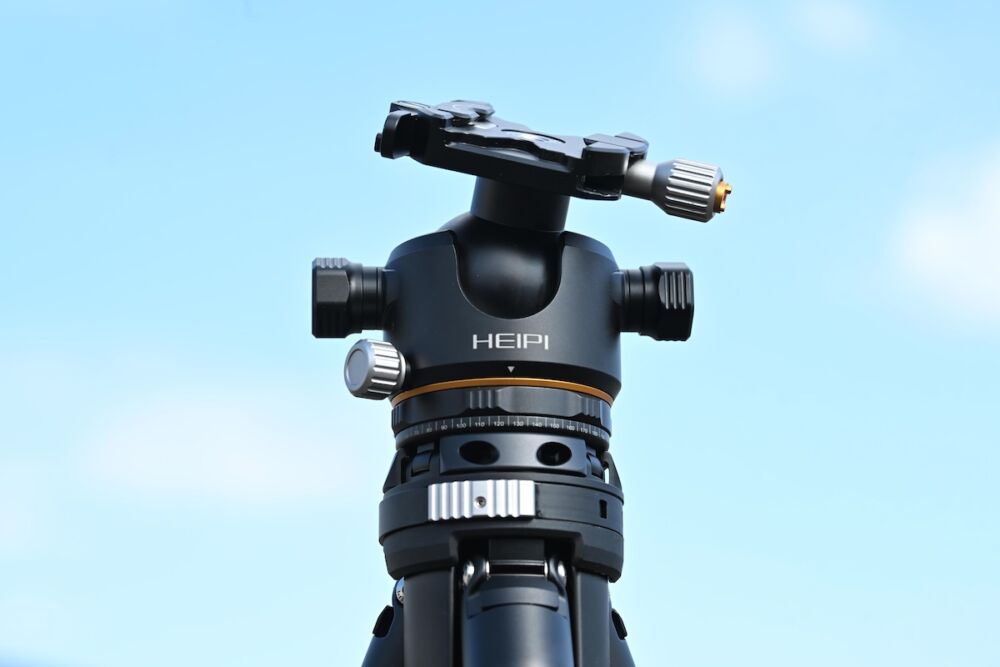When I first reviewed the “original” Nikon Z7, I immediately fell in love with the Nikon Z-mount full-frame mirrorless system. Well, almost. There was a lot to love, however, there were a couple of significant drawbacks that really stuck out to me, too.
With the Nikon Z7 II, although much is the same, the feeling is very different. This second-generation camera fixed all of the major issues I had with its predecessor, and I’m ready to call it a nearly perfect camera!

Highlights include incredible image quality and camera build quality, excellent autofocus, great shooting speed, dual card slots, and decent (or great) video specs.
In this review, I’ll get into the details of how the Z7 II is an absolute winner, other ways in which the Z7 II is an excellent or respectable choice, and possibly if I really scrutinize it, things that may yet be improved.
Nikon Z7 II Specifications

- SENSOR: Full-frame 45-megapixel CMOS sensor, Bayer filter pattern, no AA filter
- LENS MOUNT: Nikon full-frame mirrorless Z-mount
- STILL IMAGES: 45 megapixels, (8256 x 5504) 14-bit/12-bit, uncompressed, lossless, compressed .NEF (Plus “Small RAW” modes)
- VIDEO (Internal): 4K30p, (FX mode) H.264 4:2:0 8-Bit, 4K 60p (DX mode)
- VIDEO (External): 4K30p (FX mode) 4:2:2 10-Bit
- ISO: 64-2560 native, (Expanded: ISO 32-102400) Dual-gain @ ISO 320
- AUTOFOCUS: 493-point hybrid AF system, 90% horizontal frame coverage, EV -4 to EV 19
- SHOOTING SPEED (FPS): 10 FPS (electronic & mechanical)
- SHUTTER SPEEDS: 900 sec to 1/8000 sec, bulb, time, 1/200 sec flash sync speed (mechanical only)
- STABILIZATION: Yes, 5-axis, 5 EV sensor-based stabilization
- VIEWFINDER: 3.69M dot EVF, 100% coverage, 0.8x magnification
- LCD: 3.2″, 2.1M dot TFT LCD touch screen
- CONNECTIVITY: USB-PD (3.2 5 GBit/s) mini HDMI, 802.11ac wifi, Bluetooth
- STORAGE: Dual card slots: XQD, CFexpress type B, SD UHS-II
- BATTERY: EN-EL15c li-ion battery, USB-PD direct charging & power (external charger included)
- BODY CONSTRUCTION: Full magnesium alloy, fully weather-sealed
- SIZE: 134 x 101 x 70 mm (5.28 x 3.98 x 2.76 in.)
- WEIGHT: 705 g (1.55 lb / 24.87 oz)
- PRICE: $2,996 (body only) $3,096 (w/ FTZ adapter) $3,596 (w/ Nikkor Z 24-70mm f/4 S)
(B&H | Adorama | Amazon)
Nikon Z7 II Review | Who Should Buy It?
The Nikon Z7 II is one of the best all-around full-frame mirrorless cameras on the market today, whether you’re a photographer, or you’re a photo+video type creator. It really is an excellent choice for almost every type of photography!
That is, of course, as long as you understand that the Z7 II is a big sibling camera to the Nikon Z6 II, which is similar in virtually every way besides the megapixel count. In other words, if you don’t absolutely need 45 megapixels, (or the native ISO 64) …then you might be better off saving yourself about a thousand dollars, and just getting the little sibling Z6 II.
[Related: Nikon Z6 II Review: A Great Camera, Perfected?]
Having said that, 24 megapixels is just about the minimum for full-frame cameras, it seems, and 45 is now the range of “just right” for a lot of types of photography these days, from paid pros to hobbyists. So, if you have about $3K to spend, here are the things you could consider the Nikon Z7 II for.
Wedding & Event Photography
Nikon DSLRs were my equipment of choice for 15+ years as a wedding photographer; I relied on them for innumerable reasons from their consistently class-leading image quality, to the flagship features in relatively affordable cameras such as dual card slots and professional autofocus.
With the Nikon Z7 II, the improved autofocus and the addition of an SD card slot to compliment the XQD card slot make for a tempting offer for wedding photographers. Oh, and the face/eye detection is pretty impressive, too!
Having said that, 45 megapixels is a lot to take to a long wedding. You can try setting the Z7 II in its 12-bit compressed NEF raw file mode, and get nearly double the memory card capacity you usually would when shooting raw, however, if you regularly shoot many thousands of photos at weddings that last 12-14+ hours, then maybe the Nikon Z6 II is a more perfect choice for your high-volume wedding photography business.
Portrait, Fashion, & Commercial Photography

If you can use a Nikon Z7 II to photograph smaller weddings, then you can consider the Z7 II to be a perfect camera for all types of portrait photography. From the ample resolution to the gorgeous image quality, the Z7II delivers the goods just like the original Z7 did. Personally, although the image quality is, indeed, virtually identical to the Z7, I have to recommend the “mark 2” because of the dual card slots for paid work, and because of the improvements to the autofocus.
In other words, could we get by with the Z7? Yes. Would we opt for a Z7 II, if we were coming from a D850, or even if we already had a Z7? If we’re getting paid to do portraits, then yes, absolutely.
Action Sports & Wildlife Photography


Believe it or not, but the Z7 II is a pretty fast camera. In addition to offering a very respectable 10 FPS (both electronic shutter, and mechanical!) and a 50-shot buffer, (that you can roughly double by shooting in 12-bit compressed NEF, by the way) …the animal face/eye detection function of the autofocus is very good, and the overall subject tracking feature is improved, too.

All in all, while this isn’t Nikon’s high-speed flagship sports & wildlife camera, which is apparently going to also be a high-megapixel beast due out sometime in the next year. However, just as the Nikon D850 makes an incredible sports & wildlife camera for about $3K despite the sheer firepower of the $6.5K Nikon D6, I think the Nikon Z7 II is a great choice for wildlife photography.
Landscape Photography


Hands down, the Nikon Z7 II is my winner for the best landscape photography camera on the market. We’ll get into comparing the Nikon against Canon’s EO R5 and Sony’s A7R IV a little later, but, for now, I’ll just fire off the reasons why the Z7 II, and in some ways Nikon’s Z-mount in general, is/are so great for landscapes:
- Class-leading rugged build quality & weather sealing
- Class-leading dynamic range at unprecedented base ISO of 64
- An array of lightweight lenses (14-30mm f/4, 24-200mm) perfect for more adventurous/traveling landscape photographers
- Flawlessly sharp flagship lenses (14-24mm f/2.8, etc)
Now, you might be thinking, “aren’t all of these things also found on the original Z7?” …and you’d be correct, well, not entirely. The Z7 and Z7 II share a physical body in terms of ruggedness, and they share a sensor, too. If you’re looking for the best overall value in landscape photography cameras, the original Z7 is it.


Still, personally, as someone who does landscape photography by backpacking off into the wilderness and shooting time-lapse and video for days on end, I greatly appreciate the “infinite” power solution provided by a USB-C battery pack.
Also, initial testing is showing that whatever faint, rare banding pattern was present on the Z7 sensor, is not present on the Z7 II. So anyone who does a lot of shooting landscapes with the sun actually in the frame creating flare patterns will appreciate that!
8K Time-Lapse Photography

The Nikon Z7 II might not offer 8K video, however, with the 45-megapixel sensor you can capture 8K-size still images, which means you can create 8K time-lapse videos! This was a feature that was highly touted on the Nikon Z7, as well as the Nikon D850, of course, because they all share the same number of megapixels, and essentially the same sensor.
The big advantage of the Z7 II, though, is this: now, you can not only use a dedicated battery pack that allows you to double your already ample battery life, (more than enough for almost any all-day or all-night time-lapse, no doubt!) …but, also, you can plug a USB-PD battery pack directly into the Z7 II, for extended power that can last as long as you could possibly want! (Also, a 20,000 mAh Anker USB-PD battery goes for as little as $49, whereas additional Nikon EN-EL15c batteries will set you back $72, although we always recommend having at least two, of course.)
Nightscape & Astrophotography

Even more likely to be needed to power a camera all day and/or all night, of course, are the nightscape or astro-landscape photographers out there. With both a new vertical battery grip available for the Z7 II and the ability to charge and even power the camera directly via USB-PD, the Z7 II gets my vote as the better choice for those outdoor photographers who do all-day time-lapses on a regular basis.
Nikon Z7 II Review | Pros & Cons
PROS:
- Best low-ISO image quality around with native ISO 64
- More dynamic range than Lightroom even knows what to do with!
- Autofocus performance competitive with similarly priced alternatives
- Extremely rugged, fully weather-sealed build quality
- Comfortable, intuitive ergonomics
- Ample button/control customization
CONS:
- Minor ergonomic quirks unchanged from Z7
Image Quality
When it comes to image quality, Nikon has been at the front of the pack, either leading or keeping pace with the absolute best sensors on the market. The Z7 sensor was so good two years ago, (heck, the D850 sensor was so good, almost 4 years ago!) …that the Z7 II sensor is still one of the best on the market, even compared to the brand-new, latest-generation technology from the likes of Sony, Canon and even Panasonic.




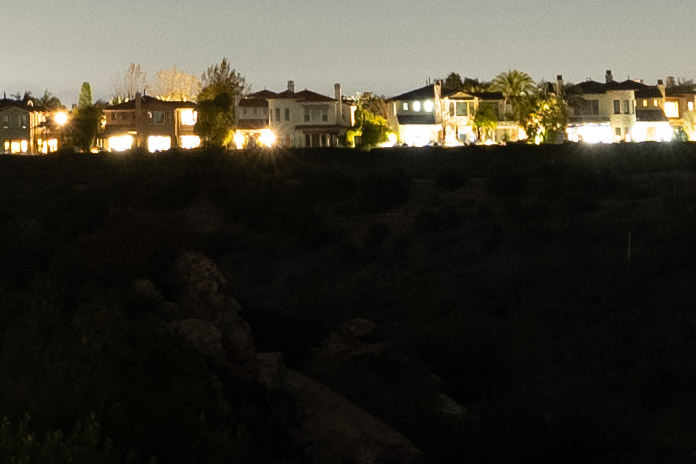
Even at ISO 400, the dynamic range coming from the Z7 II sensor is free of shadow banding, despite pushing both the Shadows and Blacks sliders to +100! (See above)

Also, the colors. WOW. I don’t know what it is that Nikon and Adobe have worked together to create, but, Nikon’s colors, even when shooting raw .NEF files, are just gorgeously colorful and vibrant. In the above image, I applied no adjustments besides changing the Adobe Profile to “Landscape”. (Even without this change, the images are beautifully vibrant and clear!)
By the way, in case you didn’t notice, those vibrant, clear colors are coming from an ISO 1600 image. Usually, color saturation really starts to degrade once you get towards higher ISOs, but with the Z7 II files, you can expect gorgeous colors well up to the 5-digit ISOs!
Autofocus Performance
We could try and perform all sorts of controlled lab tests to compare which camera has the most reliable autofocus, but in my experience reviewing all of the latest cameras and in comparing them against innumerable other cameras going back 10+ years, here is what I have to say about Nikon’s latest autofocus system: It works so incredibly well that if you’re missing shots, it is probably your fault, not the camera’s. Let’s let the results speak for themselves…




It is both accurate and consistent. It can track subjects in low light and even pitch-dark conditions, and even at ultra-fast apertures. As you can tell in this review, we had a lot of fun nailing focus wide-open on Nikon’s new 50mm S-line f/1.2 prime!
Yes, Sony is still slightly ahead of the pack in terms of dynamic subject tracking. However, if you really care about autofocus for subjects like erratic-action sports, then Sony’s best cameras are well over $4K and even over $6K, not just under $3K like the Z7 II is.
Overall Performance
At 10 FPS for both the electronic and mechanical shutter, the Nikon Z7 II will qualify as a “speed demon” for most types of photography, and at least “pretty fast” for the really high-speed subjects.
Beyond the simple measurement of shooting speed, other aspects of speed and responsiveness are excellent, too. The buffer is not jaw-dropping, however, if you shoot in 12-bit compressed .NEF, as I mentioned, you can approximately double its size.
Things like shutter lag, EVF lag, and blackout time are all very impressive, making the camera feel snappy and responsive. Lastly, speaking of “responsive”, unlike some other cameras that always take an extra second to do functions during image playback like magnifying to 100%, or when changing settings like ISO, …the Nikon Z7 II delivers a highly professional, responsive experience overall.
Design, Ergonomics, Customization

I had a couple of minor quirks about the original Z7 that I wasn’t a very big fan of, and as the two bodies are outwardly identical, the button layout has not changed with the Z7 II. It’s not a very big deal, though; for each button that I complain about on Nikon, I have two or three frustrations with the buttons and controls on other brands of cameras. In other words, I may have some annoyances, but I still prefer Nikon’s ergonomics and overall design/control layout, period.
- The Drive Mode button is down in the lower-right corner of the back of the camera, and it should be in the upper-left. (Or, this should be a customizable option.)
- The Menu and Play buttons could be swapped to match the more common (and for most, more practical) arrangement that other mirrorless cameras have.
- The AF point control joystick does not have the option to function in exactly the same way as the Nikon D850, allowing for multiple AF activation options.
- All customizable buttons could offer more functions such as magnifying, rating,
Durability
Like its predecessor, Nikon built the Z7 II to be a professional, rock-solid workhorse. And yes, the Z7 II earns that many descriptive words regarding its durability, because it is, in fact, made to be a “beefy” camera.
Value
Simply put, the Nikon Z7 II is the most affordable camera in its class, despite being one of the best. If you value resolution and are looking for a camera that offers 8K or greater, (stills; not necessarily video) …then the Nikon Z7 II is clearly the best value.
The only other option that we might consider are the slightly older generation cameras, such as the Nikon Z7 which is now on sale for just under $2,500, and the Sony A7R III, which is now $2,798. (NOTE: At present, the Sony A7R III is on sale for just $2,298! This might not be the case at the time you’re reading this review, unfortunately.)
Nikon Z7 II Review | Compared To The Competition

Now that there are many more high-megapixel full-frame mirrorless cameras on the market, there is some diverse competition! The Canon EOS R5, the Sony A7R IV, and the Panasonic S1R all have high-megapixel full-frame sensors that are all some of the best we’ve ever seen.
Why should you choose the Nikon Z7 II instead of its competitors? In my opinion, the Z7 II stays true to what Nikon is known best for: competitive or even winning performance, in an unbeatable value package.
Canon’s EOS R5 is $3,899, and offers not just 45 megapixels, but also 8K RAW video. It might be worth it if you want those video specs, or any of the ultra-expensive RF L lenses. But honestly? Nikon’s Z-mount lenses are just as incredible, thanks to the completely unrestricted mount diameter and flange distance, plus, I think the Nikon Z system overall appeals to a broader crowd due to its value at all price points, not just the highest-end.
Panasonic’s S1R costs $3,697, and offers an impressive feature set with a few perks that might interest you. Namely, compared to the Nikon Z7 II, the S1R has the most ideal pixel-shift feature available; it creates actual raw photos of the high-res images in-camera, instead of requiring software in post-production like Sony and Olympus do, as far as I know. All in all, though, with the ergonomic quirks and other minor complaints I have about the Panasonic S1 lineup, I’d say that the Z7 II is once again a better choice for well-rounded and photography-oriented people out there.
Sony’s A7R IV is a megapixel beast and has the best autofocus in this class of cameras. However, the advantage in autofocus performance is a much slimmer margin these days with how good the Z7 II is, and to be quite honest, the 61-megapixel sensor makes the camera itself just not as well-rounded as the Z7 II, for a number of reasons. (I prefer Nikon’s abundance of raw file options that allow you to blast away at 10 FPS for a good long while, (and a buffer that clears quite fast, too. I also prefer the flexibility of the raw files and the base ISO of 64, as opposed to just sheer resolution. (If you do want those megapixels, though, the A7R IV is hard to beat.)

What if you are a Nikon shooter who already owns a Nikon Z7, though? It’s really quite simple: Yes, if you are pushing the envelope in terms of your autofocus reliability needs, or if you need the dual card slots, or if any of the other more specialized functions/options stand out to you, such as the availability of a fully-fledged vertical grip, or the direct USB-PD power and faster charging, plus of course the new video specs which are going to be improved even further via firmware.
What if you don’t own a Z7 “classic” yet, and are deciding which model to get? Well, you can find the Nikon Z7 on sale for $2,496, or for $3,096 with the impressive 24-70mm f/4. That’s a very attractive offer, indeed. Honestly? Again, not to sound like a broken record, but if you don’t specifically need the Z7 II’s dual card slots, direct USB-PD power, or improved autofocus, then the original Z7 is still such a good camera that I believe its rugged build quality and high-performing sensor will still stand the test of time. With a virtually identical sensor in an identical physical body, the Nikon Z7 could still be the perfect camera for you, despite its age, for many years to come.
The original Z7 is still such a good camera that I believe its rugged build quality and high-performing sensor will still stand the test of time.
Personally? I definitely want what the Z7 II has to offer, and it’s absolutely worth the price. I shoot paid work as a photographer, and I shoot lots of video both for paid content creation, and as a hobbyist just making nature videos. I even create all-day and all-night time-lapse videos, so the direct USB power is a huge plus for me too!
Nikon Z7 II Review | Conclusion

I barely had any complaints about the original Nikon Z7, and Nikon addressed all of the biggest ones with the Z7 II. With a price tag just under $3K, this is simply the best camera around when it comes to high-resolution work such as landscapes or commercial/editorial work, especially if you’re interested in the slight advantage that ISO 64 can give you compared to a native base of ISO 100!
The competition is strong, and honestly, the playing field has leveled off quite a bit in the last two years, but that hasn’t stopped Nikon from proving once again that they are so good at what they do best, they make cameras that barely need to be “updated” to remain competitive with, or even on top of, the competition.
So, there you have it. The Nikon Z7 II is a competitive camera in every photographic genre, and a real winner as a rugged outdoor/landscape camera. Whatever type of photography you do, if you’re looking for a high-resolution flagship camera at a relatively affordable price, we highly recommend the Z7 II.
Check Pricing & Availability
The Nikon Z7 II is available now and will cost $2,996 for the body only, or $3,096 with the FTZ adapter, or $3,596 as a kit with the Nikkor Z 24-70mm f/4 S lens.







